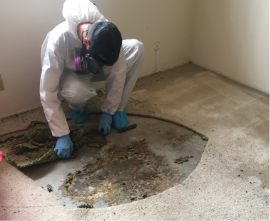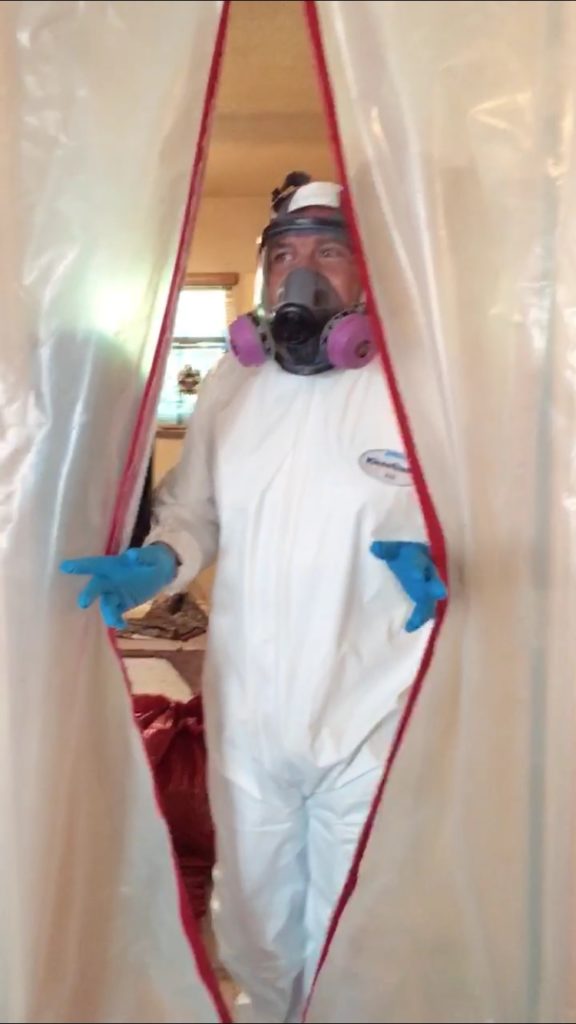What is a Biohazard Anyway?

One of the great services The BioClean Team offers our clients is handling biohazardous waste disposal. We get plenty of calls from folks who call for help and don’t realize that that’s what they need! Turns out most people who don’t work in full hazmat suits are a little unsure about the whole biohazard thing. Makes sense. So, this time on the blog we decided to answer that question. So, just what is a biohazard anyway?
What is a Biohazard
Biohazard, a shortened form of biological hazard, is any biological substance that can be a threat to the health of living things, primarily that of humans. It is sometimes called ‘infectious waste.’ Okay, now that we got the whole definition thing out of the way let’s get deeper.
Biohazards can take any number of different forms from a virus, toxin, or tiny organism that when came into contact with would cause adverse health conditions.
What is considered biohazard waste?
Biohazard waste is any waste that has come into contact with those biological substances. Some examples of the most common biohazards, especially the ones we deal with are:
- Human blood and blood products in liquid or semi-liquid form and everything saturated with it.
- Human body fluids: Semen, cerebral spinal fluid, amniotic fluid, synovial fluid, pericardial fluid, saliva etc.
- Pathological waste: human tissue, organs, and body parts.
- Microbiological waste: laboratory waste such as discarded specimen cultures, blood and body fluids in lab containers, results of cultures, etc.
- Animal Waste: carcasses, body parts, and any bedding materials
- Sharps waste: Medical needles, syringes, and lancets.
Not All Biohazards are Equal
According to the CDC, there are four levels of biohazard, based on the risk and severity of the disease/illness that can be transmitted.
Biohazard Level 1
Bacteria and viruses that cause chicken pox, E. coli, or Bacillus subtilis belong to level 1. These possess a small risk and the level of precautions needed to prevent it are likewise minimal, gloves and a face mask of some sort.
Biohazard Level 2
Level 2 encompasses two different groups of bacteria/viruses, anything that causes only a mild disease or is difficult to contract in the air. Things like influenza, Lyme disease, hepatitis A, B, and C, scrapie, dengue fever and more.
Biohazard Level 3
Diseases and viruses that can cause severe, even fatal diseases, but for which treatments do exist. This means things like anthrax, SARS, MERS, West Nile virus, the list goes on.
Biohazard Level 4
As you might have guessed, this where things get serious. Biohazard level 4 are any viruses that cause serious or fatal diseases in people, and for which there does not exist a cure or treatment. Ebola, Bolivian hemorrhagic fever, Marburg virus. The precautions to take when dealing with biohazard level 4s mandate a clean lab, multiple showers, vacuum room, segregated air supply, pressure suits. When you think of biohazards in movies like Outbreak (1995) you’re thinking of a level 4 situation.
So, what is a biohazard?
It’s a potential health concern that needs to be addressed, that’s what! And the sooner the better! But don’t just grab yourself some plastic gloves and a trash bag and get started, you might only put yourself at further risk.
Why you need to hire a professional?
If you suspect you have biohazardous waste on your hands, you need to call in professionals like us here at The BioClean Team. We have the training, the skills, and the professional grade equipment necessary to handle the contaminated waste to ensure not just our health and safety but also yours. You can be certain that when the job is done there is no lingering health concerns, no potential biohazard left to grow and cause any issues.
It’s not about business hours, it’s about safety! That’s why in case of emergencies we are available 24/7, so don’t hesitate to pick up the phone and make the call. The BioClean Team will come out and do the work professionally, up to industry, state, and health standards and regulations. Cleaning, disinfecting, eliminating any odors and disposing of the biohazardous waste as it should be done, period.
